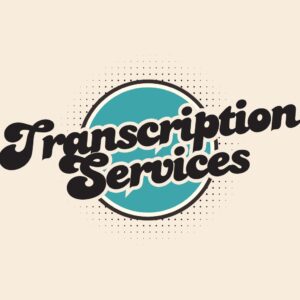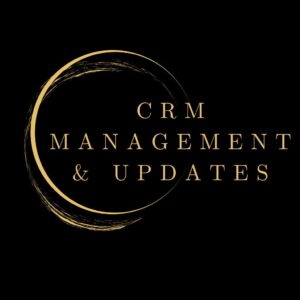Payment Reminders: Streamlining Cash Flow and Strengthening Client Relationships
In today’s fast-paced business environment, timely payments are the lifeblood of any organization. Late or missed payments can disrupt cash flow, delay projects, and strain client relationships. This is where payment reminders become an indispensable tool for businesses of all sizes.
When implemented strategically, payment reminders not only ensure prompt payments but also enhance professionalism, client trust, and operational efficiency. This article explores the importance, strategies, and tools for effective payment reminders, helping businesses maintain financial health while nurturing strong client relationships.
1. What Are Payment Reminders?
Payment reminders are notifications sent to clients or customers, prompting them to settle outstanding invoices. These reminders can take multiple forms:
-
Emails: Polite and professional messages with invoice details and due dates.
-
SMS/Text Messages: Quick, concise alerts for immediate attention.
-
Phone Calls: Personalized reminders for high-value invoices or sensitive accounts.
-
Automated App Notifications: Integrated reminders through invoicing or accounting software.
The goal is to encourage timely payments without damaging client relationships.
2. Why Payment Reminders Are Crucial
a. Ensure Steady Cash Flow
Consistent revenue is essential for operations, payroll, and investments. Payment reminders reduce delays, keeping your cash flow predictable.
b. Reduce Administrative Burden
Automated reminders save time and minimize the need for manual follow-ups, freeing staff to focus on strategic tasks.
c. Minimize Late Payments
Clear, timely reminders encourage clients to pay before overdue penalties or interest accrue.
d. Strengthen Client Relationships
Professional, polite reminders convey transparency and accountability, building trust with clients.
e. Improve Financial Planning
Knowing when payments are due allows businesses to forecast revenue accurately, plan expenses, and make informed decisions.
3. Types of Payment Reminders
a. Pre-Due Reminders
Sent before the invoice due date, these reminders gently prompt clients to prepare for payment, reducing the risk of delays.
b. On-Time Reminders
Alerts sent on the due date to ensure payment is processed promptly.
c. Past-Due Reminders
Polite follow-ups for overdue invoices, usually including a summary of outstanding amounts, payment methods, and any penalties for late payment.
d. Automated Recurring Reminders
For subscriptions or repeat clients, automated reminders ensure continuity and consistency without manual intervention.
4. Best Practices for Effective Payment Reminders
a. Be Clear and Concise
Include essential details: invoice number, due date, payment method, and total amount due.
b. Maintain a Professional Tone
Even when payments are late, politeness and professionalism preserve client relationships.
c. Use Multiple Channels
Combine email, SMS, and app notifications for maximum visibility, depending on client preferences.
d. Personalize When Necessary
For high-value clients, consider personalized phone calls or tailored messages to emphasize importance while maintaining a positive relationship.
e. Set a Reminder Schedule
Establish a timeline: pre-due, due date, one week past due, two weeks past due. Consistent reminders improve the likelihood of timely payments.
f. Include Payment Options
Offer multiple payment methods such as credit cards, bank transfers, or digital wallets to make payment convenient and reduce friction.
5. Tools and Technologies for Payment Reminders
Modern technology makes payment reminders efficient, automated, and trackable. Some popular tools include:
-
Accounting Software: QuickBooks, Xero, and FreshBooks can schedule and send automated reminders.
-
CRM Platforms: Salesforce or Zoho CRM integrate invoicing with client management, triggering reminders based on workflows.
-
Payment Gateways: Stripe, PayPal, and Square provide built-in reminder functionality.
-
Mobile Notifications: Apps like Wave or Zoho Invoice send SMS alerts for quick client engagement.
Automation reduces manual work, ensures consistency, and tracks client responses, making follow-ups more effective.
6. Common Challenges and How to Overcome Them
a. Client Ignorance
Some clients may overlook invoices. Sending pre-due reminders and polite follow-ups increases visibility.
b. Negative Client Reactions
Avoid aggressive language. Use a professional, solution-oriented approach to maintain relationships.
c. Missed Notifications
Use multiple channels (email, SMS, apps) and schedule reminders at strategic intervals.
d. Managing High Volume
Automate reminders using software tools to manage hundreds or thousands of invoices without overwhelming your team.
7. Benefits of Using Payment Reminders
-
Reduced Late Payments: Clear reminders encourage timely settlements.
-
Improved Cash Flow Management: Predictable payments allow for better planning.
-
Strengthened Client Relationships: Professional, courteous communication enhances trust.
-
Time Savings: Automation eliminates repetitive manual follow-ups.
-
Financial Insights: Track overdue accounts and payment trends for strategic decision-making.
8. Tips for Crafting Effective Payment Reminders
-
Subject Line Matters: Use clear, direct subject lines like “Invoice #12345 Due Soon”.
-
Keep Messages Polite: Avoid harsh wording; emphasize cooperation.
-
Include Deadlines and Penalties: If necessary, mention late fees transparently.
-
Highlight Payment Methods: Make it easy for clients to pay immediately.
-
Track Responses: Monitor who has viewed and acted on reminders for better follow-up.
9. Real-World Applications
-
Freelancers & Consultants: Ensure timely payments without awkward conversations.
-
Subscription Services: Keep recurring payments on track.
-
B2B Companies: Maintain professional relationships while ensuring consistent cash flow.
-
E-commerce Platforms: Reduce abandoned payments and streamline revenue collection.
Payment reminders, when executed thoughtfully, protect revenue streams and reinforce business professionalism across all industries.
10. Future of Payment Reminders
The future is moving toward AI-driven and predictive reminders:
-
Smart Automation: AI predicts late payments and sends proactive reminders.
-
Personalized Messaging: Tailors communication based on client behavior.
-
Seamless Integration: Embedded in accounting, CRM, and ERP systems for cohesive workflows.
-
Multi-Channel Communication: Combines email, SMS, apps, and even chatbots for instant engagement.
Businesses adopting these advanced strategies can maximize cash flow while maintaining strong client relations.
11. Final Thoughts
Payment reminders are more than just follow-ups; they are strategic tools that strengthen cash flow, improve financial management, and nurture client relationships. By implementing professional, polite, and consistent reminders — supported by automation and analytics — businesses can reduce late payments, streamline operations, and achieve long-term growth.
Whether you run a small business, manage a subscription service, or operate a large enterprise, effective payment reminders are key to maintaining financial health and operational efficiency. Start optimizing your payment reminder strategy today and watch how timely communication transforms revenue collection and client satisfaction.
Visit datahome.solutions today and let us help you simplify collections with smart Payment Reminders that work.
Read more > https://datahome.solutions/payment-reminders-streamlining-cash-flow-and-strengthening-client-relationships/
#DataHomeSolutions,#SmartFinance,#DigitalSolutions,#PaymentReminders, #CashFlowManagement, #InvoiceManagement, #FinancialEfficiency, #ClientRelationships, #AutomatedPayments, #BusinessGrowth











